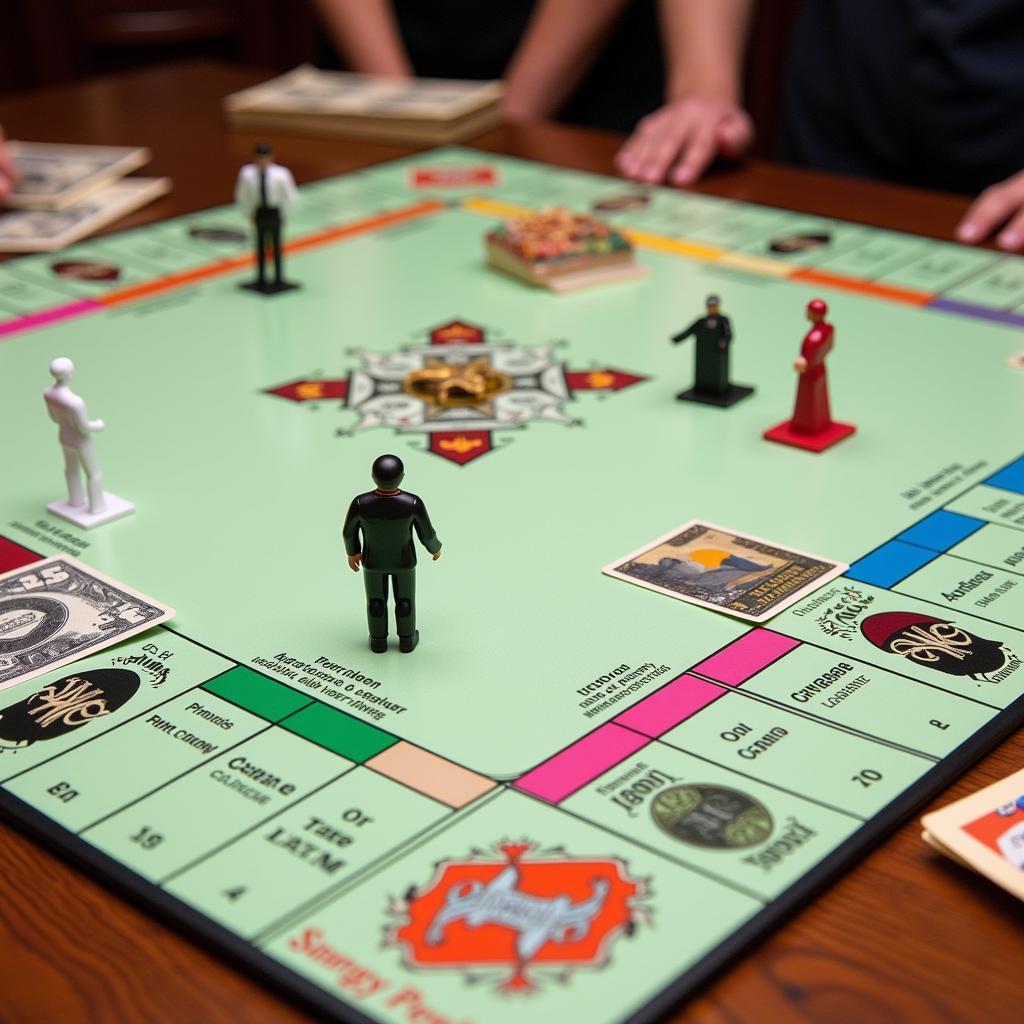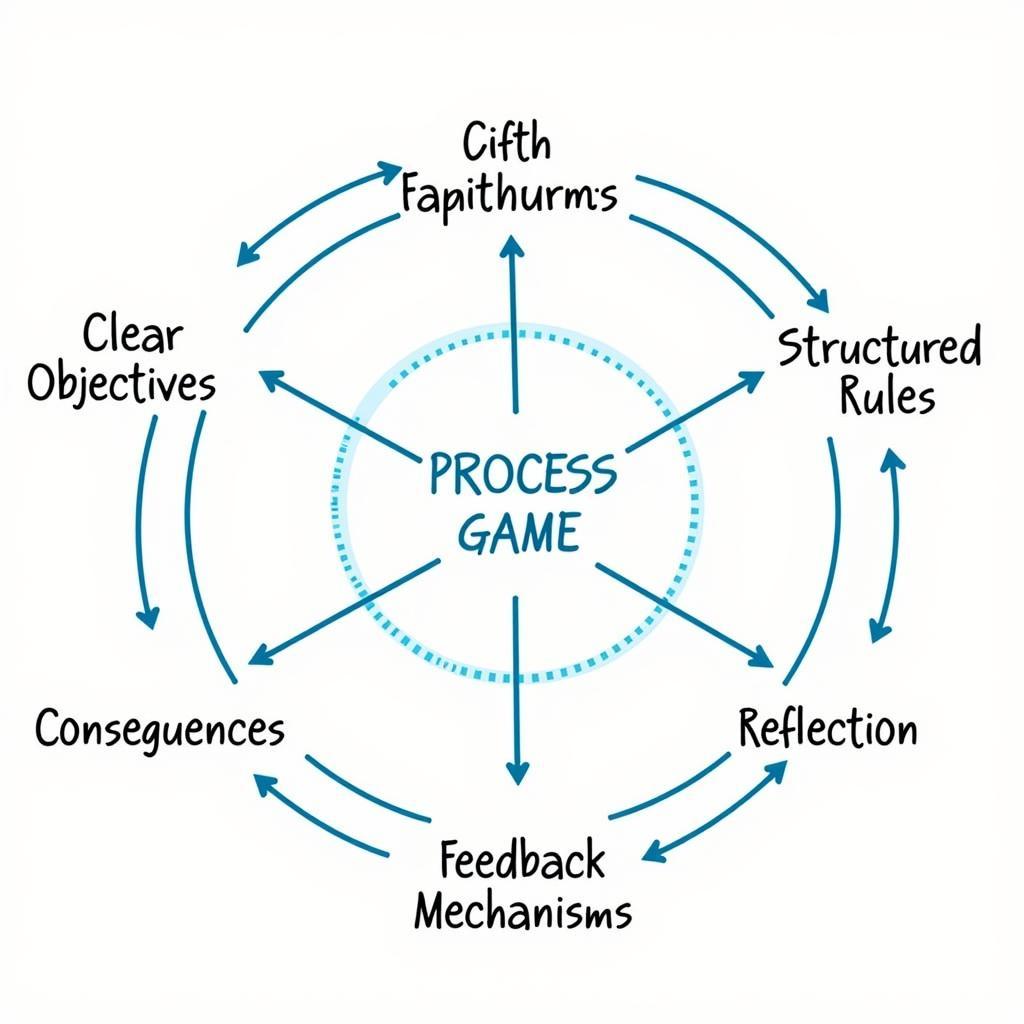Process Games are everywhere, shaping how we interact with systems, learn new skills, and even have fun. From simple board games to complex simulations used in professional training, the core concept of a process game revolves around experiencing a structured sequence of actions and consequences. This guide delves into the fascinating world of process games, exploring their diverse applications and benefits. You can even enhance your gaming experience with our Level Up Exchange.
What Defines a Process Game?
A process game is more than just a game with rules. It’s a dynamic learning tool that simulates real-world processes, allowing players to experience the consequences of their decisions in a safe and controlled environment. This experiential learning approach fosters deeper understanding and improved decision-making skills. Process games can be simple or complex, ranging from classic board games like Monopoly, which simulates property acquisition and financial management, to intricate simulations used in business training to teach strategic planning and risk assessment. They’re used in education, business, healthcare, and even personal development. What sets them apart is their focus on the process itself, rather than just winning or losing.
 Monopoly board game example
Monopoly board game example
Why are Process Games Effective?
Process games offer a unique blend of engagement and learning. By actively participating in a simulated environment, players develop a more intuitive understanding of the underlying processes. This “learning by doing” approach is far more effective than passive learning methods like lectures or reading. Furthermore, process games often involve social interaction, promoting collaboration, communication, and negotiation skills. They can also reveal hidden biases and assumptions, leading to valuable self-reflection and improved critical thinking.
The Key Elements of a Process Game
Several key elements contribute to the effectiveness of a process game:
- Clear Objectives: A well-defined goal provides direction and motivation for players.
- Structured Rules: Rules establish the framework within which the game operates, ensuring fairness and consistency.
- Consequences: Actions within the game should have tangible consequences, mimicking the real-world implications of decisions.
- Feedback Mechanisms: Regular feedback helps players understand the impact of their choices and adjust their strategies accordingly.
- Reflection and Debriefing: Post-game analysis allows players to consolidate their learning and draw broader conclusions about the process being simulated. Need to adjust your in-game settings? Check out our guide on how to fix filters.
 Diagram illustrating key elements of a process game
Diagram illustrating key elements of a process game
How Process Games are Used
Process games are incredibly versatile and can be applied across a wide range of fields:
- Education: Engaging students and making complex concepts more accessible.
- Business: Training employees on new procedures, improving teamwork, and fostering leadership skills.
- Healthcare: Simulating patient interactions and practicing clinical decision-making.
- Personal Development: Exploring communication styles, conflict resolution, and emotional intelligence. For aspiring game developers, the Gamers Helping Gamers Scholarship might be helpful.
Designing Your Own Process Game
While many pre-designed process games are available, creating your own can be a rewarding experience. Consider the following steps:
- Identify the Target Process: What specific process do you want to simulate?
- Define Learning Objectives: What should players learn from the game?
- Develop Rules and Procedures: Create a clear set of rules that govern the game.
- Design Feedback Mechanisms: How will players receive feedback on their performance?
- Plan for Debriefing: How will you facilitate post-game reflection and learning? Looking to explore the relationship between input and output in games? Our article on input/output games offers valuable insights.
Conclusion
Process games offer a powerful and engaging way to learn and improve decision-making skills. By simulating real-world processes, they provide a safe environment for experimentation and exploration. Whether you’re a teacher, trainer, or simply someone interested in learning new things, process games can be a valuable tool. Understanding the “process game” is key to leveraging its full potential.
FAQ
- What is the main purpose of a process game? To provide an interactive and engaging learning experience.
- How are process games different from regular games? They emphasize the process and learning over winning or losing.
- What are some examples of process games? Monopoly, simulations used in business training, and educational games.
- Who can benefit from using process games? Educators, businesses, healthcare professionals, and individuals seeking personal development.
- How can I design my own process game? By identifying the target process, defining learning objectives, developing rules, designing feedback mechanisms, and planning for debriefing.
- Where can I find pre-designed process games? Many are available online and through educational resources.
- What are some key benefits of using process games? Improved decision-making skills, enhanced understanding of complex processes, and increased engagement.
Need support? Contact us at Phone Number: 0902476650, Email: [email protected] or visit our address: 139 Đ. Võ Văn Kiệt, Hoà Long, Bà Rịa, Bà Rịa – Vũng Tàu, Việt Nam. We have a 24/7 customer support team. You might also be interested in learning more about our JHI_Service.





